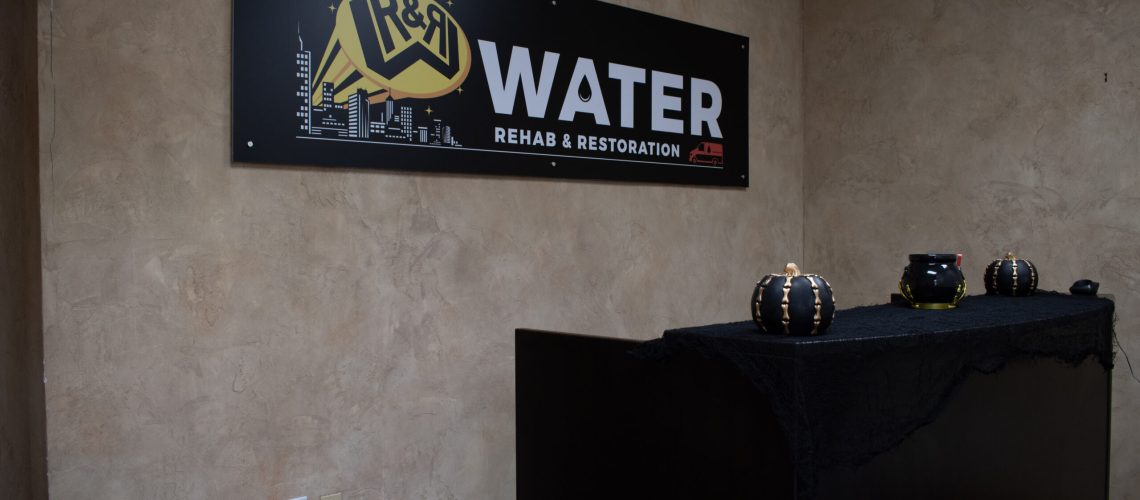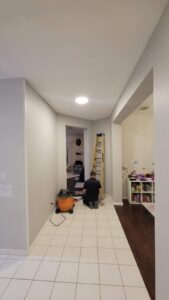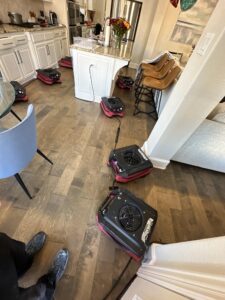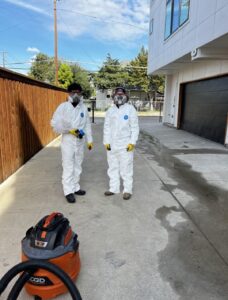When water damage hits your home or business, it can be tempting to grab a mop, rent a fan, and try to take care of the cleanup yourself. After all, how hard can it be? A little drying, a little disinfecting, and back to normal… right?
Unfortunately, water damage is rarely that simple. As a professional water damage restoration company, we’ve seen the aftermath of many do-it-yourself restoration attempts, and trust us: while the intention might be good, the risks often outweigh the rewards.
In this article, we’ll walk you through the most common risks of tackling water damage cleanup on your own and why calling in a professional team like Water Rehab & Restoration is the safest, most effective way to protect your property, your health, and your wallet.
Key Takeaways
- DIY water damage restoration often misses hidden moisture, increasing the risk of mold and structural issues.
- Contaminated water requires professional handling to avoid serious health hazards.
- Insurance claims may be denied if proper mitigation and documentation are not followed.
- Inadequate equipment and lack of training can make the damage worse or create long-term problems.
- Professional restoration ensures faster recovery, compliance with industry standards, and peace of mind.
You May Not Spot All the Damage
Water damage has a sneaky way of hiding in plain sight. What you see on the surface ( like wet flooring, a stained ceiling, or puddles) is only part of the story. Water seeps into drywall, subfloors, insulation, and even electrical systems. If you’re not using professional-grade moisture detection tools, there’s a good chance you’re missing hidden water pockets.
When moisture is left behind, it creates the perfect environment for mold growth and structural damage. By the time you realize there’s a problem, you could be dealing with something far more serious (and expensive) than the original water damage.
Professional restoration teams use infrared cameras, moisture meters, and other specialized tools to identify water intrusion behind walls, under floors, and in ceilings, AKA the places most DIYers don’t think to check.
Mold Growth Is a Real Threat
Mold begins to grow within 24 to 48 hours of water exposure, especially in warm, humid environments, and it doesn’t take much. Just a little leftover moisture and organic material (like wood, drywall, or carpet padding) can trigger a full-blown mold issue.
DIY attempts often fail to completely dry the space or properly sanitize affected areas. This not only opens the door for mold to thrive but can also lead to serious indoor air quality concerns.
Exposure to mold can cause health issues, especially for those with allergies, asthma, or weakened immune systems. Even if you don’t see visible mold, it could be growing behind your walls or under your flooring. That’s why proper containment, removal, and remediation procedures are absolutely critical.
You Could Be Dealing with Contaminated Water
Not all water damage is created equal. Water from a clean source (like a broken supply line) is one thing. But if the damage comes from a sewage backup, floodwater, or sump pump failure, you’re dealing with Category 2 or 3 water, which can contain harmful bacteria, viruses, and other contaminants.
Handling this kind of water without proper safety gear and training puts you at risk of serious illness. Plus, contaminated water can cause cross-contamination throughout your property if it is not properly managed and contained.
At Water Rehab & Restoration, we assess the source and category of water to determine the appropriate cleaning protocol, disinfection process, and safety measures needed for safe restoration.
You Might Make the Problem Worse
Without the right equipment and training, it’s easy to make mistakes that actually extend the damage rather than fix it.
Here are some common DIY missteps we often see:
- Using household fans instead of industrial-grade drying equipment
- Not removing damaged drywall or flooring that’s beyond saving
- Closing up walls before they’re completely dry
- Skipping proper sanitization of affected areas
These errors can lead to long-term structural issues, persistent odors, and mold infestations, which will cost much more to fix down the line.
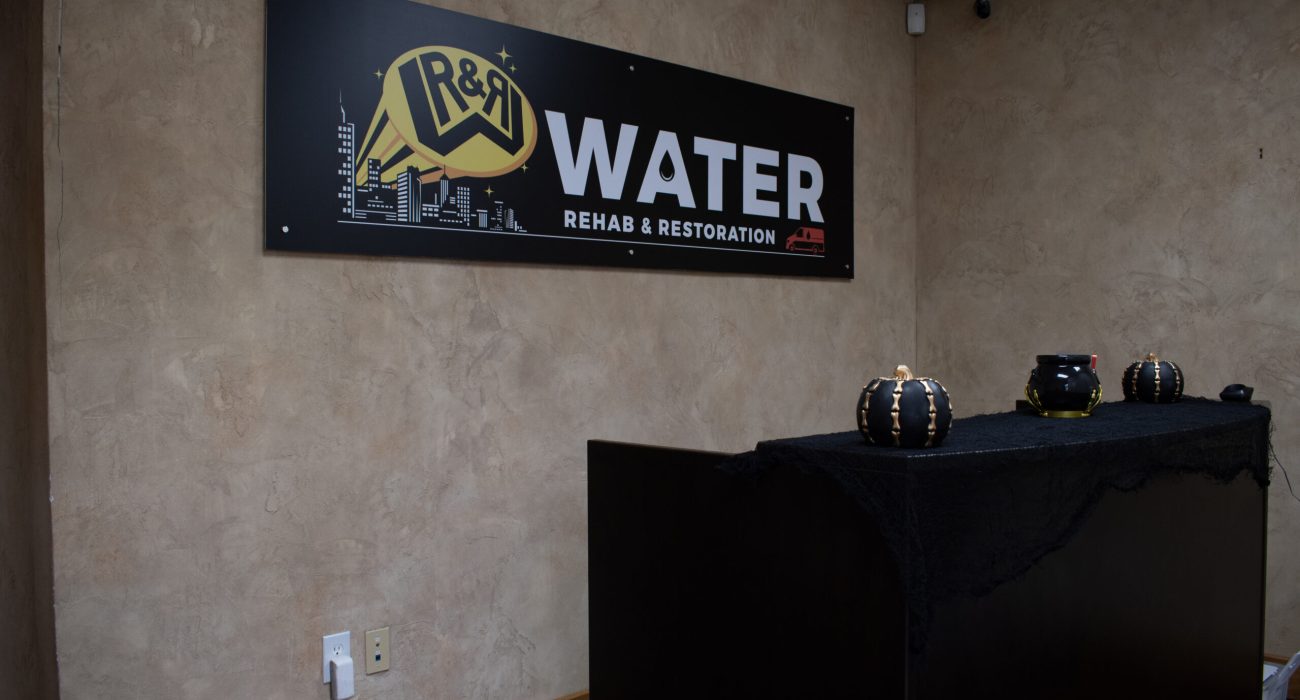
Insurance Claims Can Be Denied
Water damage restoration often involves filing an insurance claim, especially if the damage is significant. But here’s something many property owners don’t realize: DIY cleanup attempts can complicate or even invalidate your claim.
Insurance adjusters expect to see:
- Proper documentation of the damage
- Proof of immediate mitigation efforts
- Professional assessments and reports
If your DIY work results in insufficient drying, mold growth, or ongoing issues, your insurance company may argue that you didn’t take the right steps to protect your property, and they might reduce or deny coverage.
Our team not only handles the restoration process but also provides the detailed documentation and photographs insurance companies require. We can even work directly with your adjuster to help streamline the claims process.
It’s Physically and Emotionally Exhausting
Let’s face it: water damage is stressful. And trying to manage the cleanup yourself on top of everything else going on in your life only adds to your stress.
Water damage restoration involves heavy lifting, long hours, and sometimes dangerous conditions (like wet electrical systems or exposure to biohazards). It’s tough work, and it can take a toll on your physical health and mental well-being.
Instead of burning yourself out, let a professional team take the load off your shoulders. We have the manpower, tools, and systems in place to get the job done quickly, safely, and correctly.
You Probably Don’t Have the Right Equipment
A shop vac and a few fans won’t cut it when it comes to proper water removal and structural drying. Professional water damage restoration companies use:
- High-powered water extractors
- HEPA air scrubbers
- Commercial-grade dehumidifiers
- Infrared moisture detection tools
- Negative air machines (for mold or contaminated water scenarios)
This specialized equipment makes a huge difference in how quickly and effectively the property can be dried out and restored.
By going the DIY route, you may be working with inadequate tools that simply can’t get the job done, leaving behind residual moisture that leads to long-term issues.
You Could End Up Spending More in the Long Run
Many people choose the DIY route thinking it will save money, but in reality, it often ends up costing more due to overlooked damage that leads to mold or rot, improper drying that causes secondary damage, or the need to hire professionals after the fact to fix or redo the job.
Plus, if your insurance claim gets denied because of DIY mistakes, you may be on the hook for the full cost of repairs.
Getting it right the first time with professional restoration services ensures you minimize long-term expenses, protect your investment, and avoid unnecessary stress.
You’re Missing Out on Peace of Mind
At the end of the day, peace of mind is priceless. Knowing that your home is fully dried, cleaned, and safe to live in means you can move forward confidently, without worrying about what’s lurking behind your walls or under your floors.
When you hire Water Rehab & Restoration, you’re not just getting a service. You’re getting:
- Fast response times
- Certified, trained professionals
- State-of-the-art equipment
- Full transparency and documentation
- A job done right the first time
Let us handle the hard part so you can focus on getting back to normal.
If you’re facing water damage, don’t go it alone. At Water Rehab & Restoration, we’re here to guide you through every step of the restoration process quickly, safely, and professionally. Let us help you recover the right way. Call us now to get started.

